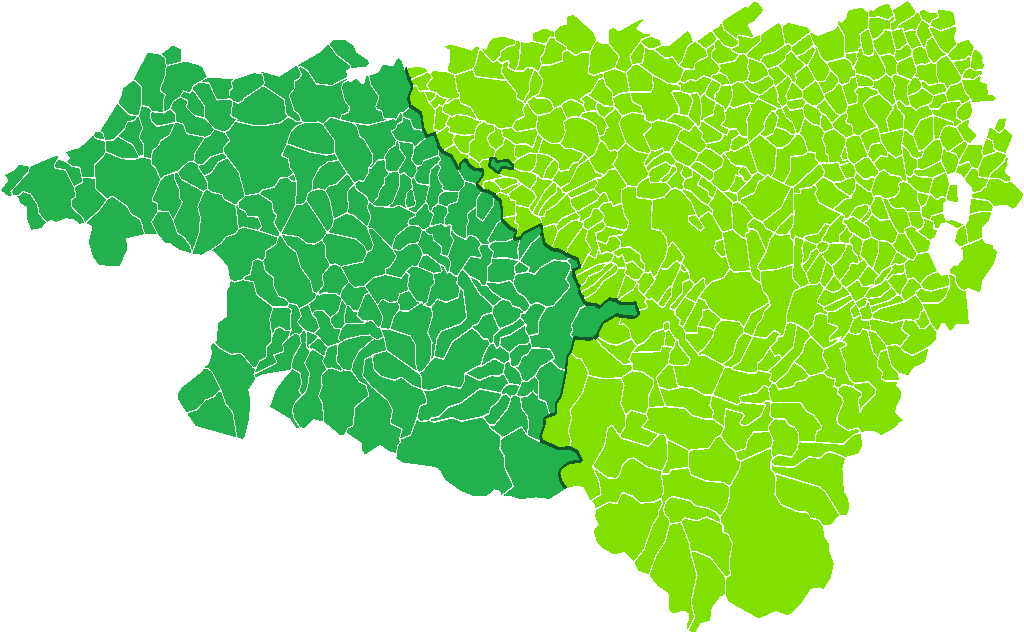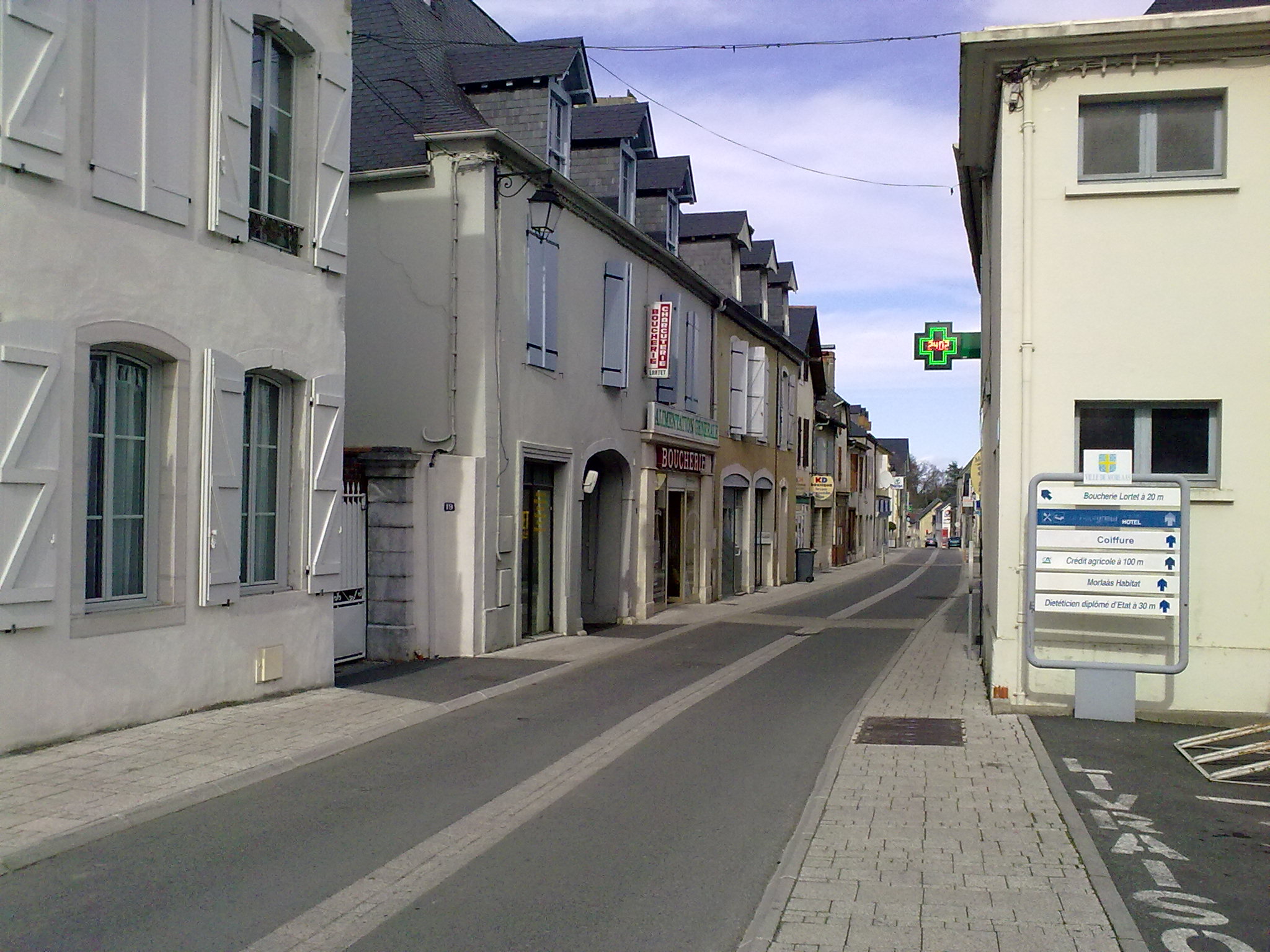|
Lescar
Lescar (; oc, Lescar) is a commune in the Pyrénées-Atlantiques department and Nouvelle-Aquitaine region of south-western France. Lescar is the site of the Roman city known variously as Benearnum, Beneharnum or Civitas Benarnensium, the location providing the name for the later region of Béarn. In 841, Benearnum was razed by the Vikings and Morlaàs became the Béarnaise capital. However, from the twelfth century a new city grew up at Lescar. Lescar Cathedral was built during this period, and was the seat of the Diocese of Lescar until 1801. The remains of the last monarchs of all Navarre Queen Catherine I (†1517) and King John III (†1516) lie at the cathedral. Today, Lescar is primarily a suburb of the nearby town of Pau. The commune of Lescar has joined together with 30 neighbouring communes to establish the Communauté d'agglomération Pau Béarn Pyrénées which provides a framework within which local tasks are carried out together. Population Twin towns * L' ... [...More Info...] [...Related Items...] OR: [Wikipedia] [Google] [Baidu] |
Diocese Of Lescar
The Roman Catholic Diocese of Lescar (Latin: ''Dioecesis Lascurrensis;'' French: ''Diocèse de Lescar''; Basque: ''Leskarreko elizbarrutia''), in south-western France, was founded in the fifth century, and continued until 1790. It was originally part of the Province of Novempopulania, and Lescar held the seventh place among the cities. Its see was the Cathedral of the Assumption in Lescar, begun in 1120; the crypt of the cathedral was also the mausoleum of the family of Albret in the 16th century. The bishopric was suppressed by the Legislative Assembly during the French Revolution , in the Civil Constitution of the Clergy in September 1790, as part of a systematic effort to eliminate redundant bishoprics in France. By the Concordat of 1801, struck by First Consul Napoleon Bonaparte and Pope Pius VII, the diocese of Lescar was not revived, and the territory of the diocese was divided between the diocese of Agen and the diocese of Bayonne. Bishops of Lescar to 1200 * ? c. 5 ... [...More Info...] [...Related Items...] OR: [Wikipedia] [Google] [Baidu] |
Lescar Cathedral
Lescar Cathedral (french: Cathédrale Notre-Dame-de-l'Assomption de Lescar) is a Roman Catholic church and former cathedral dedicated to the Assumption of the Virgin Mary. It is located in the town of Lescar, Pyrénées-Atlantiques, France. It has been listed since 1840 as a ''monument historique'' by the French Ministry of Culture. Eglise de l'Assomption, ancienne cathédrale It was formerly the seat of the Diocese of Lescar, suppressed under the Concordat of 1801 and divided between the dioceses of Agen and Bayonne. History and description The building was begun in 1120 by Bishop Guy de Lons, and was sacked by the Protestants during the reign of Jeanne III of Navarre. It was restored in the 17th and 18th centuries. The apse, housing a pavement mosaic from the 12th century with hunting scenes, is in Romanesque style. In the interior, columns have capitals depicting histories of the life of Daniel, of the birth of Christ and the Sacrifice of Isaac. Royal burials From the end o ... [...More Info...] [...Related Items...] OR: [Wikipedia] [Google] [Baidu] |
Pau, Pyrénées-Atlantiques
Pau (, ) is a Communes of France, commune overlooking the Pyrenees, and prefecture of the Departments of France, department of Pyrénées-Atlantiques, regions of France, region of Nouvelle-Aquitaine, France. The city is located in the heart of the former sovereign principality of Béarn, of which it was the capital from 1464. Pau lies on the Gave de Pau, and is located from the Atlantic Ocean and from Spain. This position gives it a striking panorama across the mountain range of the Pyrenees, especially from its landmark "Boulevard des Pyrénées", as well as the hillsides of Jurançon AOC, Jurançon. According to Alphonse de Lamartine, "Pau has the world's most beautiful view of the earth just as Naples has the most beautiful view of the sea." The site has been occupied since at least the Roman Gaul, Gallo-Roman era. However the first references to Pau as a settlement only occur in the first half of the 12th century. The town developed from the construction of its Château ... [...More Info...] [...Related Items...] OR: [Wikipedia] [Google] [Baidu] |
John III Of Navarre
John III (french: Jean d'Albret; 1469 – 14 June 1516) was ''jure uxoris'' King of Navarre from 1484 until his death, as husband and co-ruler with Queen Catherine. He was a son of Alain I, Lord of Albret and his wife Frances, Countess of Périgord. King of Navarre Marriage to Queen Catherine and accession to the throne He became King of Navarre and Count of Foix by virtue of his 1484 marriage to Queen Catherine (1470–1517), successor of her brother Francis Phoebus in 1483. He shared with Catherine tasks related to the government of the kingdom, but his rule was marked by the guardianship of Catherine's mother Magdalena de Valois up to 1494—she died in 1495—and persistent diplomatic and military pressure of Ferdinand II of Aragon over the Crown of Navarre, supported on the ground by the Beaumont party of Navarre. He and Catherine were crowned as monarchs in Pamplona on 10 January 1494. In the run-up to the ceremony, Louis of Beaumont—count of Lerín— ... [...More Info...] [...Related Items...] OR: [Wikipedia] [Google] [Baidu] |
Catherine Of Navarre
Catherine ( eu, Katalina, oc, Catarina; 1468 – 12 February 1517), Queen of Navarre, reigned from 1483 until 1517. She was also Duchess of Gandia, Montblanc, and Peñafiel, Countess of Foix, Bigorre, and Ribagorza, and Viscountess of Béarn. Biography Catherine was the younger daughter of Gaston of Foix, Prince of Viana, and Magdalena of Valois, the sister of Louis XI of France. She was born and raised during the reign of her paternal great-grandfather, King John II, who was succeeded by her grandmother Eleanor in 1479. Their father having already died, the crown of Navarre devolved upon Catherine's brother Francis Phoebus upon their grandmother's death the same year. Reign In 1483 the death of Francis made Catherine queen under the regency of their mother. Her uncle John of Foix, appealing to the Salic Law alien to the Kingdom of Navarre, claimed the throne and ignited a civil war (1483–1492) that reignited the old conflict of the Beaumont-Agramont parties. In 1484, ... [...More Info...] [...Related Items...] OR: [Wikipedia] [Google] [Baidu] |
Béarn
The Béarn (; ; oc, Bearn or ''Biarn''; eu, Bearno or ''Biarno''; or ''Bearnia'') is one of the traditional provinces of France, located in the Pyrenees mountains and in the plain at their feet, in southwest France. Along with the three Basque provinces of Soule, Lower Navarre, and Labourd, the Principality of Bidache, as well as small parts of Gascony, it forms in the southwest the current ''département'' of Pyrénées-Atlantiques (64). The capitals of Béarn were Beneharnum (until 841), Morlaàs (from ca. 1100), Orthez (from the second half of the 13th century), and then Pau (beginning in the mid-15th century). Béarn is bordered by Basque provinces Soule and Lower Navarre to the west, by Gascony ( Landes and Armagnac) to the north, by Bigorre to the east, and by Spain (Aragon) to the south. Today, the mainstays of the Béarn area are the petroleum industry, the aerospace industry through the helicopter turboshaft engine manufacturer Turbomeca, tourism and agriculture ... [...More Info...] [...Related Items...] OR: [Wikipedia] [Google] [Baidu] |
Morlaàs
Morlaàs (; Gascon Morlans) is a commune in the Pyrénées-Atlantiques department in south-western France. It is the seat of a canton. After the Roman city of Benearnum (today's Lescar) was razed by the Vikings in 841, Morlaàs became the capital of the ancient province of Béarn. It remained the capital until the 12th century, when Orthez took over. Population See also *Communes of the Pyrénées-Atlantiques department The following is a list of the 546 Communes of France, communes of the Pyrénées-Atlantiques Departments of France, department of France. The communes cooperate in the following Communes of France#Intercommunality, intercommunalities (as of 202 ... References Communes of Pyrénées-Atlantiques Pyrénées-Atlantiques communes articles needing translation from French Wikipedia {{PyrénéesAtlantiques-geo-stub ... [...More Info...] [...Related Items...] OR: [Wikipedia] [Google] [Baidu] |
Communes Of The Pyrénées-Atlantiques Department
The following is a list of the 546 Communes of France, communes of the Pyrénées-Atlantiques Departments of France, department of France. The communes cooperate in the following Communes of France#Intercommunality, intercommunalities (as of 2020):BANATIC Périmètre des EPCI à fiscalité propre. Accessed 3 July 2020. *Communauté d'agglomération Pau Béarn Pyrénées *Communauté d'agglomération du Pays Basque *Communauté de communes Adour Madiran (partly) *Communauté de communes du Béarn des Gaves *Communauté de communes du Haut Béarn *Communauté de communes de Lacq-Orthez *Communauté de communes des Luys en Béarn *Communauté de communes du Nord-Est Béarn *Communauté de communes du Pays de Nay (partly) *Communauté de communes de la Vallée d'Ossau References |
Communauté D'agglomération Pau Béarn Pyrénées
The communauté d'agglomération Pau Béarn Pyrénées is a ''communauté d'agglomération'' in the ''département'' of Pyrénées-Atlantiques, in the Nouvelle-Aquitaine Nouvelle-Aquitaine (; oc, Nòva Aquitània or ; eu, Akitania Berria; Poitevin-Saintongeais: ''Novéle-Aguiéne'') is the largest administrative region in France, spanning the west and southwest of the mainland. The region was created by t ... Regions of France, ''région'' of France. It provides a framework within which local tasks common to the 31 member Commune in France, ''communes'' can be carried out together. It was created in 2017 by the merger of the former communauté d'agglomération Pau-Pyrénées and the communautés de communes Gave et Coteaux and Miey de Béarn. The ''communauté d'agglomération'' is centred on the town of Pau, Pyrénées-Atlantiques, Pau. Its area is 343.6 km2. Its population was 161,871 in 2018, of which 76,275 in Pau proper. [...More Info...] [...Related Items...] OR: [Wikipedia] [Google] [Baidu] |
Suburb
A suburb (more broadly suburban area) is an area within a metropolitan area, which may include commercial and mixed-use, that is primarily a residential area. A suburb can exist either as part of a larger city/urban area or as a separate political entity. The name describes an area which is not as densely populated as an inner city, yet more densely populated than a rural area in the countryside. In many metropolitan areas, suburbs exist as separate residential communities within commuting distance of a city (cf "bedroom suburb".) Suburbs can have their own political or legal jurisdiction, especially in the United States, but this is not always the case, especially in the United Kingdom, where most suburbs are located within the administrative boundaries of cities. In most English-speaking countries, suburban areas are defined in contrast to central or inner city areas, but in Australian English and South African English, ''suburb'' has become largely synonymous with what ... [...More Info...] [...Related Items...] OR: [Wikipedia] [Google] [Baidu] |
Communes Of France
The () is a level of administrative division in the French Republic. French are analogous to civil townships and incorporated municipalities in the United States and Canada, ' in Germany, ' in Italy, or ' in Spain. The United Kingdom's equivalent are civil parishes, although some areas, particularly urban areas, are unparished. are based on historical geographic communities or villages and are vested with significant powers to manage the populations and land of the geographic area covered. The are the fourth-level administrative divisions of France. vary widely in size and area, from large sprawling cities with millions of inhabitants like Paris, to small hamlets with only a handful of inhabitants. typically are based on pre-existing villages and facilitate local governance. All have names, but not all named geographic areas or groups of people residing together are ( or ), the difference residing in the lack of administrative powers. Except for the municipal arrondi ... [...More Info...] [...Related Items...] OR: [Wikipedia] [Google] [Baidu] |



